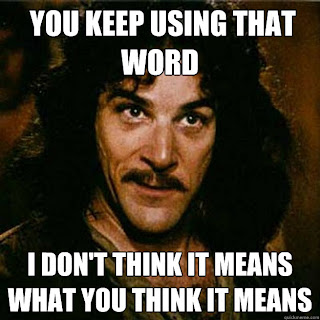
(By Sean MacEntee, Flickr Creative Commons)
One of the biggest mistakes I encounter in my work is people, groups, units, etc approaching me saying, “We want to be on Twitter.”
My first question is always the same: Why?
While I wholeheartedly support having a social presence, at the end of the day, Twitter, Facebook, Instagram, and all the other social channels are tools. Simply creating an account and making a few posts is not going to have a major impact if you don’t know why you’re there in the first place.
Any communication or marketing initiatives ought to be an extension of an established, deliberate strategy. Most of the groups I meet with don’t even have a strategic plan for their unit. How can you effectively measure the results of your work if you don’t have any idea what your purpose is, and what you’re hoping to achieve?
Before you log in to Twitter, before you’ve created your website, the first thing you need to do as a unit is write a Strategic Plan. A strategic plan is not a static document that you write once and never look at again. It’s a dynamic tool that should guide all major decisions and activities, especially as they relate to communications.
Steps for Creating an Effective Strategic Plan
- Determine what’s important to the success of your unit.
For university groups, that could be improving the level of alumni engagement, or increasing the quantity and quality of applications. It could be based on overall user satisfaction. Pick 3-5 key objectives that are important to your group.Keep in mind that a good goal is SMART: specific, measurable, actionable, realistic, and time-based. Saying, “we want to have a better relationship with our alumni,” is well and good, but it’s not a goal. It’s important to unpack those abstract statements into something you can actually evaluate, otherwise you will have no way of knowing if you are successful or not. - Gather baseline measurements.
Determine where you are now in relation to your measurable objectives. These baselines are what you’ll use to compare the results of future activities. - Set future benchmarks.
Make sure these are realistic and time-based. If in the previous year you received 250 applications, don’t try to double that in a year, unless you have limitless resources at your disposable. Try setting a modest goal, perhaps increasing the number by 1/3. - Develop a communications plan that supports your goals.
This plan should incorporate the entire spectrum of interaction you have with your audience, including: in-person/telephone/email communication (direct); website/social media channels (broadcast); and even posters/print materials you create and distribute. All of these mediums contribute to your audience’s impressions and experience with your unit. - Execute your plan.
- Measure the results.
There are a number of tools available to measure the impact of your digital communications work.- Web analytics tools, such as Google Analytics will help evaluate how much traffic your social efforts are driving to your web properties.
- Sentiment tools like Sysomos Heartbeat or Social Mention can help you better understand what people are saying about you, and the quality of those sentiments (positive, negative or neutral).
- Engagement tools such as Crowdbooster or Sprout Social will help you identify your most engaged users (“brand champions”) as well as map out the engagement rate for each Tweet or Post.
- Evaluate the success/failure of each activity against your stated goals.
Consider migrating away from activities that don’t lead to gains in your objectives, and instead focusing your time and resources on communication activities that have a positive net impact on your unit’s goals. - Repeat.
Your goals should/will change over time, and your communication activities should change with them.
